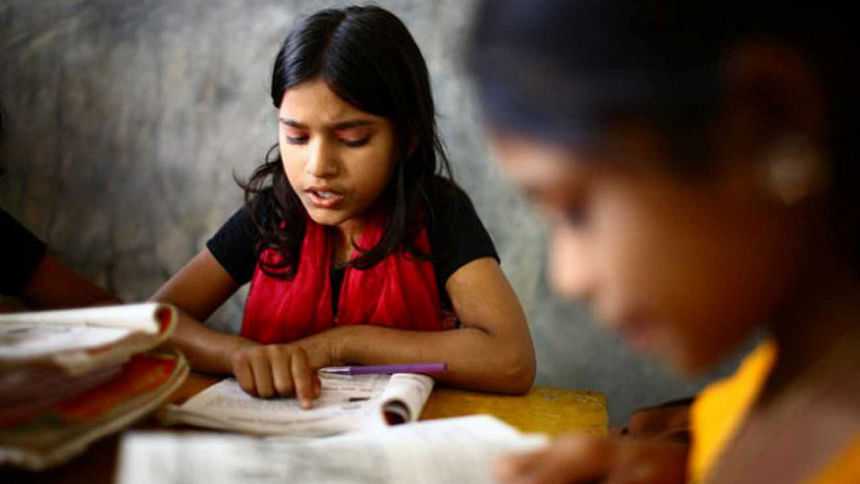A mixed bag of challenges

Bangladesh has, over the years, been hailed as a potential economic powerhouse. The challenges are multifarious. Whilst some are mid to long term like infrastructure development, many are current problems that are not being addressed for multifarious reasons. For instance, the cost of doing business in the country remains high despite reform programmes initiated by the government in an effort to cut both red-tape and address the issue of graft. Progress has been a mixed bag. Another major challenge remains the quality of our workforce which has a direct impact on productivity. These are some of the issues dealt with in Asian Development Bank's (ADB) latest issue of 'Development Effectiveness Brief'.
It is interesting to note that the ADB is stepping up with infrastructure financing for Bangladesh, particularly in energy, transport and urban infrastructure. The scenario has changed drastically over the last few years, especially since the advent of the Chinese-led financial institution Asian Infrastructure Investment Bank (AIIB) burst on to the scene that aims to concentrate on one issue only: "AIIB is a new multilateral financial institution founded to bring countries together to address the daunting infrastructure needs across Asia". While AIIB will undoubtedly play an important role in providing much needed finance for developing countries like Bangladesh, it is to banks like the ADB we will have to turn to for concessional, long term loans.
While we are now set on a trajectory to finally address infrastructure needs like energy and mass transportation, the Achilles heel remains education. Our system does not really prepare graduates with skills that many sectors need, like manufacturing. But if we are to take advantage of the demographic dividend, the "challenge is to transform the vast youth population into a trained human resource base through better education and the development of skills needed by industry." Thus increased budgetary allocation in education is in the national budget at a government level, because despite what financial institutions like the ADB can do, the State has to step up in bringing about qualitative changes to education. It is not about increasing the CGPA threshold, rather it has everything to do with making education work for people by imparting requisite skills that can help graduates enter the workforce at a much more proficient level than today; it has to do with arresting dropout rates and promoting gender equality so that more women are educated alongside men to make their contribution to the national economy.
There must be changes initiated at policy level that will increase access to education, that is quality education. Yes, ADB and likeminded financial institutions have been providing loans that address reform programmes which have helped the government build new facilities like classrooms, sanitation blocks and drinking water facilities. Some 19 million primary education students get new textbooks at the start of the school year (which is a major feat by itself), but much work remains to be done on the method of teaching, the manner in which students appear in examinations where the method remains 'learning by rote' and where there is little in way of analytical reasoning. Yes, there is resistance to transformation, amongst both teachers and students, but that has to change, period! Information and Technology is making its way in to the classroom but not fast enough, but it is a start.
As we move towards job creation, the agriculture sector, while contributing about 15 percent of the GDP, still accounts for nearly half the jobs (45 percent) of the labour force and provides sustenance to 7 out of 10 people. A major hindrance in labour movement in the country and the urban centres like Dhaka remains inefficient transportation. The financing has been found with the aid of multilateral agencies that includes the ADB and JICA. We are now on track to seeing an overhauling of the transportation sector that includes overhauling of rail links, the introduction of rapid mass transportation systems like the MRT in the city and an elaborate network of flyovers. However, the slow rate of implementation on any number of these projects is mindboggling. Although we see that the ongoing USD 430 million Railway Sector Investment Programme has been financed by the ADB for the "installation of 64 km of a double-track railway and a signaling system from Tongi to Bhairab Bazar railway junction along the Dhaka-Chittagong railway corridor, connection to Chittagong port", we cannot but express exasperation at the slow rate of project implementation on several mega projects. It is no longer a question of lack of financing; rather it is the government's apparent inability to get projects off the ground, on time, that is holding back our potential growth.
The good news is that the ADB is onboard with development assistance. The World Bank has also recently stepped up and re-engaged with the government on major issues like infrastructure development. At the end of the day, whether the Bangladesh economy will fly or not depends on our ability to transform the infrastructure landscape where connectivity and power become available to both urban and rural centres of development; whether we are able to take advantage of the demographic dividend by transforming our human capital into a skilled labour force. These changes are incremental in nature and while no one is looking at a radical transformation within the span of a few years, the scenario will only change with commitment at policy level to make the required changes, which are often painful, but necessary.
The writer is Assistant Editor, The Daily Star.

 For all latest news, follow The Daily Star's Google News channel.
For all latest news, follow The Daily Star's Google News channel. 



Comments